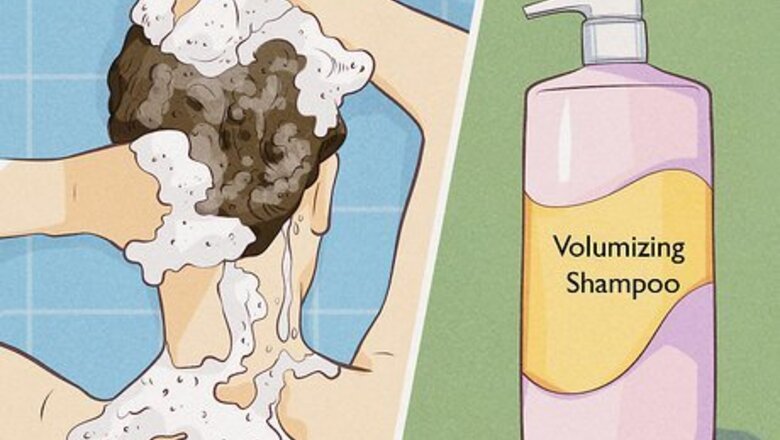
views
Using Products to Hide Your Scalp at the Part

Use volumizing shampoo. People with thin hair get the most benefits from shampooing daily. This helps to break up any oils and spread them out so that the hair at the scalp looks less limp. Shampooing can also hydrate your scalp. To keep your hair healthy, use a sulfate-free shampoo that is advertised as volumizing or oil reducing. Towel drying your hair can increase volume around your part, making it easy to hide your scalp.

Lift your roots with a volumizing product. Spray a small amount of mousse or spray onto your fingertips and massage it into the hair roots immediately surrounding your part. Look for a product that gives more definition to your part area without any accompanying stickiness. Don’t overdo it by using more than one product at a time.

Apply hair fibers to your part. These are very small, colored, plastic-based fibers that attach directly to your hair and scalp. Some fibers require that you use a bonding solution, whereas others stick instantly where they are scattered. Placing these fibers around your part can create the illusion of a hidden scalp. Choose a fiber that is very close to your hair color. Many hair care companies, like Keranique, offer a wide array of color options. Hair fibers will usually stay in place when exposed to wind or rain. However, they will fall out when you wash your hair. This is why many people with hair fibers will only shampoo their hair once a week. The downside is that this can lead to oily hair. You can find hair fibers online or at your local beauty supply store.
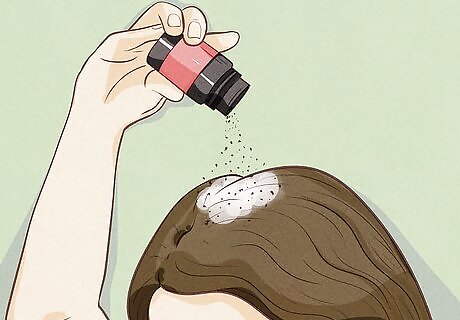
Place some hair powder around your part. This light powder is colored to match your hair. Depending on the brand, it can be brushed/sprayed or shaken out onto the scalp. You can use it to make the width of your part less noticeable or to fill in any bare patches of hair. One of the great things about hair powder is that it is generally sweat resistant. But, it’s still a good idea to keep an eye on it and reapply if necessary. To apply the product without it caking, keep the spray or bottle at least six inches away from your scalp.
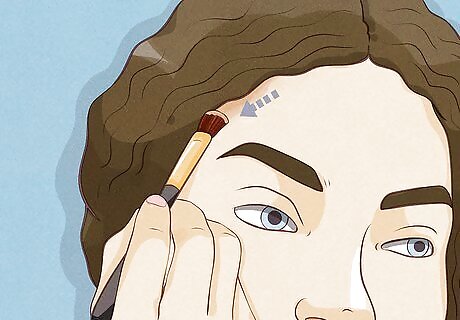
Blend eyeshadow over the part. This is a creative solution that relies on the same principles as hair powder. Find an eyeshadow that matches the general color of your hair or is slightly darker. Use an eyebrow spoolie or small makeup brush to apply the powder into your part. Evenly cover the whole area or you’ll draw more attention to it. Don’t apply too much pressure or you could redden your scalp or cause flaking.
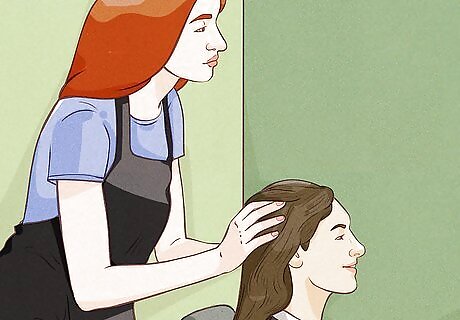
Talk with your stylist. At your next hair appointment, tell them that you are concerned about how to style your hair in a way that will hide your scalp. They’ll likely try out a few products or volumizing methods to see which one gets the best results. If your hair is currently thinning, let your stylist know and they’ll try to protect it from further damage. For example, you might say, “I’ve noticed my part seems a lot wider lately. Is there some way to make it appear smaller?” Your stylist could lower the possibility of damage by using products specifically designed for thin or thinning hair, for example.
Minimizing Your Part without Products
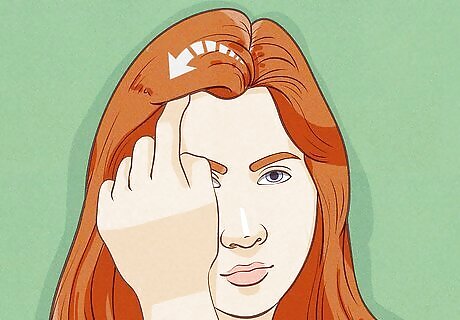
Experiment with locating your part. Get in front of the mirror and try moving your part around to different spots on your head. The best way to do this is to get a comb and guide it through your hair starting from various places on your forehead. The goal is the find the option that creates the fullest look. A deep side part is often a good option, as it draws attention to your eyes and away from the scalp around your part line. To make this part, position a comb at your hairline directly above the highest arch of one of your eyebrows. Move the comb inwards, experimenting with how far you should go.
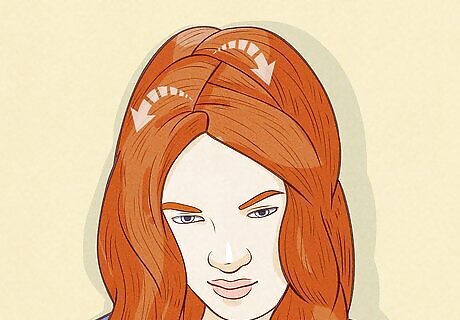
Create a zig-zag part. This style makes your part appear more segmented without any long stretches of visible scalp. Get a thin comb and place it where you’d like your part to start on your forehead. Move the comb inwards and slightly right for about an inch (2.5 cm). Keep the comb in place and separate your hair. Continue to move the comb toward the back of your head, this time angling a bit left. Keep going until your part appears to move left and right across your head, almost like a lightning bolt.
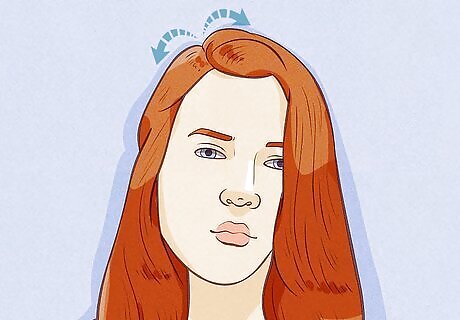
Switch part sides monthly. Moving your part around every few weeks on a schedule will help keep your thin hair from going flat or limp. Even shifting your part around just a small amount can yield big results in terms of volume.
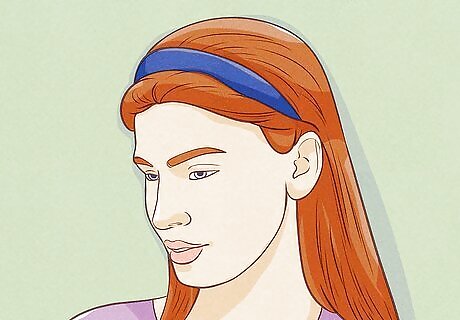
Cover your part with a hat, scarf, or thick headband. It’s possible to hide your scalp without needing to apply products or undergo procedures. Get a number of scarves and hats in different colors and textures. Play with them to see which ones make you feel the most confident and make your hair look the best.
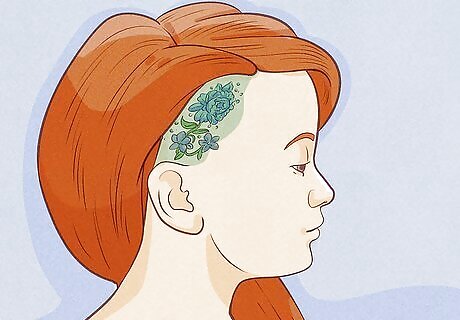
Get a scalp tattoo if you’re looking for a permanent solution. This will likely work best for people struggling with extreme hair loss or thinning. A technician applies a series of tiny colored dots to your scalp in a process known as scalp micropigmentation. When color-matched with the surrounding hair, the dots should be barely visible and may add the illusion of fullness. A downside can be that scalp micropigmentation works best on people with not only thin, but short, hair. Otherwise, multiple treatments may be required and can still only create mixed results.
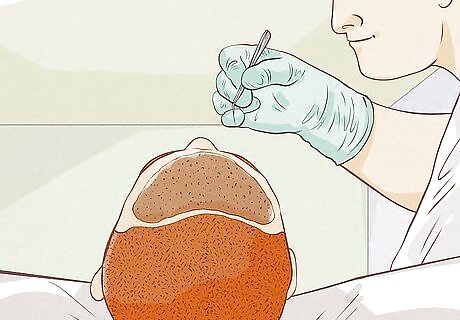
Get a transplant if you have severe hair loss. Talk with your physician about getting hair follicles removed from thicker spots on your scalp and placed in thinner areas. Ask about the price of the procedure and any possible complications. This approach may not be for everyone, but it can be a good solution for anyone dealing with ongoing hair thinning. A full hair transplant process can cost upwards of $3,000 and require multiple procedures.
Disguising Your Part with Cut and Coloring
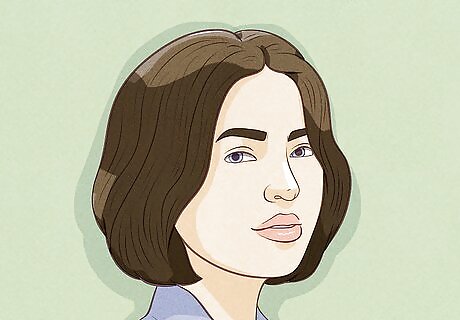
Cut your hair shorter. It may be tempting to let your hair grow out to create more volume, but the opposite is actually true. Shorter hair usually appears thicker and healthier. Show your stylist where you part your hair and ask them to cut it in short layers moving out from there. It can be scary to cut inches off your hair, so start off slowly. Gradually trim away inches until you reach a length that makes your part look good. Try going with a long bob if you have shoulder-length hair.
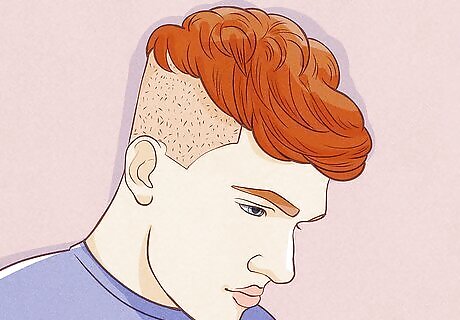
Get a textured cut. Request that your barber or stylist trim your hair at an angle. This will create more movement, which will make your hair appear thicker. Intermix layers around the part area as well. However, be aware that maintaining this type of cut will require frequent trims.

Add bangs if your scalp is visible close to your forehead. Ask your stylist to cut your bangs so that they begin higher up on your head, which will make them look fuller. Place a bit of volumizing gel onto your bangs to give them even more of a boost. In general, adding bangs draws attention downward to your face and away from your scalp.
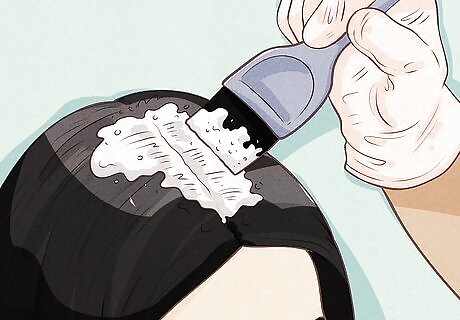
Keep roots touched up. If your roots are a different color than the rest of your hair, it will automatically draw people’s eyes to your part. Make appointments to re-color roots about once a month. If you have overall highlights, you’ll probably need those redone every 6 to 12 weeks. If you are worried about scalp visibility, choose a hair or highlight color that is close to your natural shade. This will make any future root growth less obvious. There are also root touch-up sticks that work well for a quick, on-the-go fix.
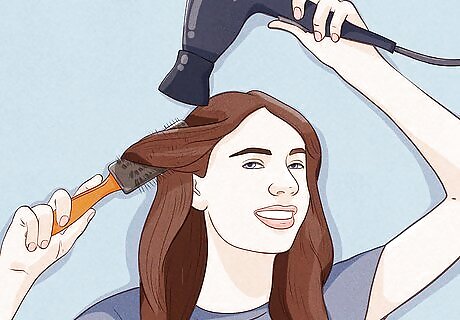
Blow out with round brush if you have straight/slightly wavy hair. It can take some effort to make thin hair appear thick enough to hide your scalp, but working with the right tools can help. Get a round brush and use it to draw up a section of hair at a time. Add some hair spray before laying the hair down again. Doing this around your part should add volume. A natural-bristle brush is your best option with thin hair. The heat generated by metal brushes can damage hair strands.
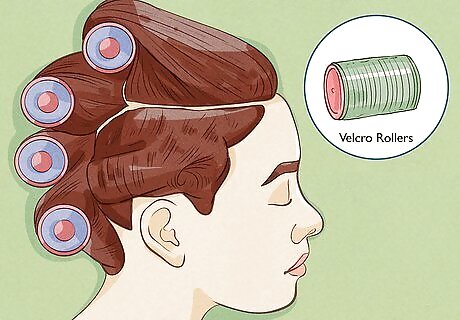
Place cooling rollers in the part area to add volume. After you’ve towel or blow dried your hair, place it in Velcro rollers. Divide your hair into small sections and roll each of them up starting from the bottom. Concentrate on your crown and part areas. Leave the rollers in for at least 10 minutes. Rollers are sold in a wide variety of sizes. Experiment to see which ones work the best for you.

















Comments
0 comment